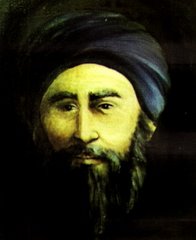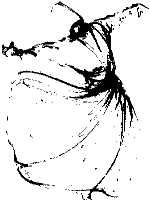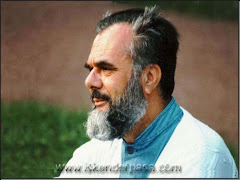I’ve just arrived back from New Zealand after spending 5 days driving with relatives around North Island. During that time, I saw many geysers, lots of Maori names for townships and suburbs and no shortage of sheep grazing on rolling green plains.
I was also able to gauge the responses of Kiwi newspapers and TV journalists and a few ordinary Kiwis to the Cronulla riots. Most Kiwis I spoke to were simply unimpressed.
Both the New Zealand Herald (for whom I occasionally write) and the Dominion Post reported the rioting in similar manner. Both highlighted the role of Sydney shockjocks in stirring up the riots, with one paper devoting at least 5 paragraphs to excerpts from comments made by Radio 2GB’s Alan Jones.
I received a call from a reporter from New Zealand’s publicly owned radio station. Our conversation went something like this.
“Hello, Mr Yusuf. We’ve read some of your pieces in the Herald. We wanted to get your views on the recent race riots.”
“Wow, do you guys get the Sydney Morning Herald?”
“No, I meant the Auckland Herald. Anyway, what do you think of the suggestion made by the NSW Police Commissioner that some Middle Eastern people hate Australian culture?”
When I told the reporter I had just arrived in Auckland that afternoon and hadn’t had a chance to see what Aussie papers were saying, he started to lose interest. And after telling him the whole thing was a law and order issue and not one of race or culture, the reporter politely ended the conversation.
Some Kiwi beaches are known for getting their human inhabitants into hot water. A friend of mine who’d lived in North Island for 4 years before settling in Sydney suggested I visit Hot Water Beach on the north-east end of North Island. “Dig into the sand and you’ll get hot water from thermal springs under the ground. You can mix the thermal water with the cold sea water and make your own natural spa!”.
But I doubt the hot water on New Zealand beaches will involve young man with hotted up cars, bad attitudes and even worse haircuts assaulting lifeguards or insulting female bathers. Nor is it likely to involve inebriated and intoxicated mobs baying for the blood of anyone resembling Jesus Christ or any other Middle Easterner.
The closest thing I saw to a riot in New Zealand was in Napier. I was walking with two female relatives, both clothed in traditional Muslim headscarves. We were walking down the main street in search of breakfast. I noticed we were getting dirty looks from the locals.
Naturally, I presumed the looks were the result of my Aussie mum and LA aunt wearing their exotic head gear. I was soon faced with the real reason for the stares when one gentleman who resembled something from a Bondi Beach pub fight screamed out:
“What are yoh do-ung hair wierung thet fruggun jersey?” [trans: “What are you doing here wearing that friggin jersey?]
I looked down and noticed the green and gold Wallabies jersey sticking out like a sore thumb.
The indigenous people of New Zealand, known to most of us as Maoris, have managed to negotiate a much more powerful role in mainstream New Zealand society. I haven’t read a lot about New Zealand history, and I still haven’t finished that book on “Community Issues in New Zealand” I was supposed to review for the Law Society Journal (they sent me the book back in 1997!).
However, my good Kiwi friend “Brudgette” (as I sometimes call her) gave me a few clues about how the Maoris made it big in Kiwistan. Now Brudge is of Scottish ancestry and hails from some town outside Christchurch famous for having a lighthouse. She uses somewhat funkier language than the rest of us.
“Basically what happened, babe, is that the Maoris smashed the crap outta the Poms and even managed to teach them a thing or two about trench warfare. The experience proved useful when the Poms went onto get hammered in subsequent WWI battles. Is that clear, gorgeous?”
(Or something like that. I was jetlagged at the time she told me this.)
The Maoris subsequently signed the Treaty of Waitangi in the 1830’s and secured a fairly generous settlement of land and other contentious issues. At least that’s what I think they did. Though a Maori Land Court still exists to settle outstanding land claims.
The point is that the Poms in Kiwistan were far more respectful toward the natives. Perhaps this respect has translated itself into greater tolerance toward subsequent arrivals. The cultural tang of Waitangi continues to taste fresh and seems to enable all sectors of Kiwistan, indigenous and not-so-indigenous, to enjoy themselves in piece and share the Kiwistani beaches and hot springs.
Perhaps if Australia’s settlers and convicts had entered into a similar treaty with our indigenous peoples, the subsequent arrivals may have had a better reception. If Aussie Muslims think they have it rough, spare a thought for the Aboriginal and Torres Strait Islanders who are still the most disadvantaged of ethnic groups in Australia.
© Irfan Yusuf 2005










